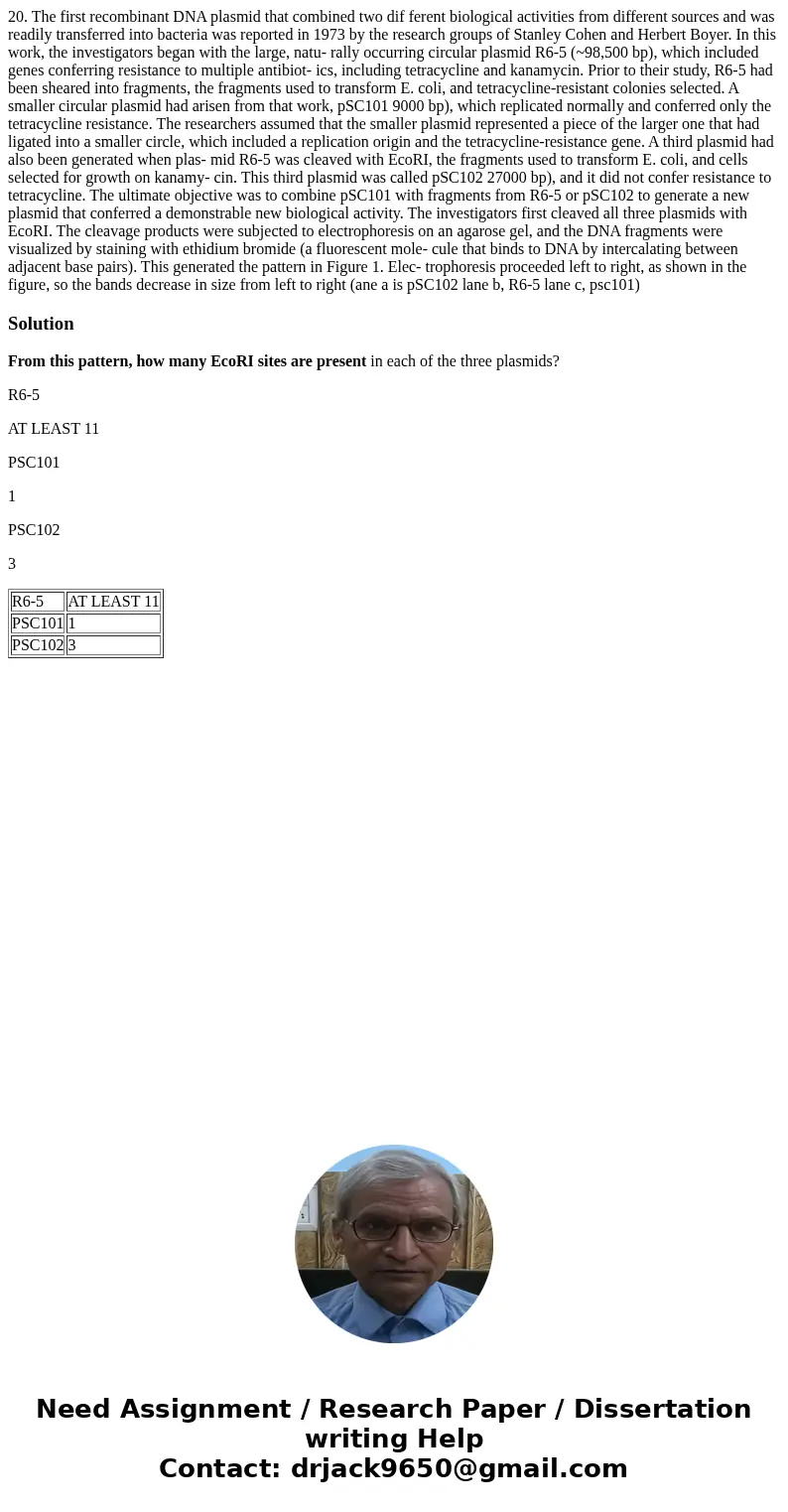20 The first recombinant DNA plasmid that combined two dif f
20. The first recombinant DNA plasmid that combined two dif ferent biological activities from different sources and was readily transferred into bacteria was reported in 1973 by the research groups of Stanley Cohen and Herbert Boyer. In this work, the investigators began with the large, natu- rally occurring circular plasmid R6-5 (~98,500 bp), which included genes conferring resistance to multiple antibiot- ics, including tetracycline and kanamycin. Prior to their study, R6-5 had been sheared into fragments, the fragments used to transform E. coli, and tetracycline-resistant colonies selected. A smaller circular plasmid had arisen from that work, pSC101 9000 bp), which replicated normally and conferred only the tetracycline resistance. The researchers assumed that the smaller plasmid represented a piece of the larger one that had ligated into a smaller circle, which included a replication origin and the tetracycline-resistance gene. A third plasmid had also been generated when plas- mid R6-5 was cleaved with EcoRI, the fragments used to transform E. coli, and cells selected for growth on kanamy- cin. This third plasmid was called pSC102 27000 bp), and it did not confer resistance to tetracycline. The ultimate objective was to combine pSC101 with fragments from R6-5 or pSC102 to generate a new plasmid that conferred a demonstrable new biological activity. The investigators first cleaved all three plasmids with EcoRI. The cleavage products were subjected to electrophoresis on an agarose gel, and the DNA fragments were visualized by staining with ethidium bromide (a fluorescent mole- cule that binds to DNA by intercalating between adjacent base pairs). This generated the pattern in Figure 1. Elec- trophoresis proceeded left to right, as shown in the figure, so the bands decrease in size from left to right (ane a is pSC102 lane b, R6-5 lane c, psc101)

Solution
From this pattern, how many EcoRI sites are present in each of the three plasmids?
R6-5
AT LEAST 11
PSC101
1
PSC102
3
| R6-5 | AT LEAST 11 |
| PSC101 | 1 |
| PSC102 | 3 |

 Homework Sourse
Homework Sourse